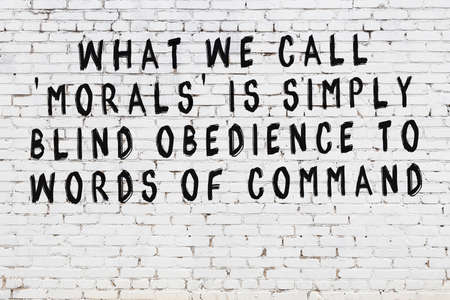1. Understanding Intuition: Definition and Historical Context in America
Intuition is a word we often hear, but what does it really mean, especially in the context of American culture? At its core, intuition refers to the ability to understand or know something immediately, without needing conscious reasoning. It’s that gut feeling you get when making a decision, even if you can’t quite explain why.
What Does Intuition Mean?
In everyday life, Americans might describe intuition as a “hunch,” “gut feeling,” or simply as “trusting your instincts.” This sense goes beyond facts and figures, drawing from a mix of experience, subconscious knowledge, and personal values. For some people, it shows up as a sudden insight; for others, it’s a quiet sense of knowing what to do next.
Common Ways Americans Refer to Intuition
| Phrase | Description |
|---|---|
| Gut feeling | An instinctive emotional response, often felt physically |
| Sixth sense | A mysterious or extrasensory perception beyond the usual five senses |
| Hunch | A guess or suspicion based on little evidence |
| Inner voice | The internal guide that suggests what feels right or wrong |
How Intuition Is Perceived in American Culture
In the United States, intuition holds a unique place. On one hand, American society values logic, science, and evidence-based thinking. On the other hand, there’s plenty of room for trusting your gut—especially in fields like entrepreneurship, sports, art, and even daily decision-making. Stories about famous leaders and innovators often highlight moments when they “just knew” the right path forward before anyone else did.
Examples of Intuition in American Life
- An entrepreneur launching a new business based on an unproven idea because it “feels right”
- An athlete making a split-second move during a game without overthinking it
- An artist choosing colors or subjects intuitively while painting or designing
- A parent sensing something is wrong with their child even when there are no obvious signs
The Historical Roots of Intuition in America
The value placed on intuition has deep roots in American history. Early pioneers had to rely on quick decisions and trust their instincts as they explored unknown territories. The idea of rugged individualism—a cornerstone of American identity—often meant trusting oneself over outside opinions or established rules.
During the 19th and 20th centuries, American thinkers like Ralph Waldo Emerson promoted concepts such as self-reliance and following one’s inner voice. In more recent times, the rise of psychology and neuroscience has led to scientific studies about how intuition works in the brain. Today, intuition is seen as both a natural human trait and something that can be nurtured through experience and reflection.
2. The Neuroscience of Intuition: Bridging Brain and Behavior
How Our Brains Create Gut Feelings
Have you ever felt a strong urge to make a choice, even when you couldn’t explain why? That’s your intuition at work. In American culture, we often talk about “trusting your gut” or having a “hunch.” But what does science say about these feelings? Recent research in neuroscience shows that intuition is more than just a mysterious sixth sense—its the result of complex brain processes working behind the scenes.
The Science Behind Intuitive Decisions
Our brains are constantly gathering information from our surroundings. Some of this information is processed consciously, but much more happens unconsciously. When we face a decision, our brain pulls from memories, experiences, and patterns weve seen before—even if we don’t realize it. This quick, automatic processing can lead to those gut feelings that help guide our choices.
Key Brain Areas Involved in Intuition
| Brain Region | Main Function | Role in Intuition |
|---|---|---|
| Prefrontal Cortex | Decision-making and planning | Analyzes complex situations quickly |
| Amygdala | Emotions and threat detection | Triggers emotional responses to subtle cues |
| Insula | Body awareness and internal signals | Processes “gut feelings” and bodily reactions |
| Basal Ganglia | Pattern recognition and habits | Picks up on familiar patterns without conscious thought |
The Impact of Intuition on Everyday Choices
In America’s fast-paced world, people rely on their intuition for everything from business decisions to daily life. Studies show that intuitive thinking can be especially useful when we’re under pressure or have to make quick judgments. For example, firefighters often rely on their gut instincts during emergencies, drawing from years of experience stored in their brains.
Logic vs. Gut Feeling: Finding the Balance
While logic gives us facts and figures, intuition helps us see the bigger picture. Neuroscientists suggest that the best decisions often come from a balance of both—using logic to check our gut feelings and vice versa. This approach is deeply woven into American culture, where being “street smart” or having good instincts is highly valued alongside critical thinking.
![]()
3. Logic vs. Gut Feeling: The American Workplace Perspective
In the fast-paced world of American business, professionals often find themselves balancing two powerful forces: logic and gut feeling. Whether you’re working in a startup, a corporate office, or a creative agency, knowing when to trust your instincts and when to stick to the facts is part of everyday decision-making. Let’s take a closer look at how people in the U.S. navigate this balance and what it means for workplace culture.
How Logic Shapes Decisions
American workplaces have long valued logical reasoning. From sales reports to quarterly projections, making decisions based on data is seen as responsible and reliable. In meetings, employees are encouraged to back up their ideas with evidence, statistics, or past results. This approach fits well with the American emphasis on accountability and transparency in business.
Common Examples of Logic-Driven Choices
| Scenario | Logic-Based Decision |
|---|---|
| Hiring new team members | Reviewing resumes, checking references, assessing skills through tests |
| Launching a new product | Analyzing market research, studying competitors, forecasting potential sales |
| Budget allocation | Comparing ROI, tracking spending history, evaluating department needs |
The Role of Intuition (Gut Feeling)
Even in a logic-driven environment, many American professionals admit they rely on intuition—especially when time is short or information is incomplete. Sometimes called “going with your gut,” these quick judgments can be shaped by years of experience or a sudden sense that something just feels right (or wrong). While not always easy to explain, intuitive choices can make a big difference in situations where numbers alone don’t tell the full story.
When Do Americans Trust Their Instincts?
- Hiring: After interviews, managers might choose a candidate who “just seems like a great fit.”
- Negotiations: Sensing that an offer isn’t quite right and holding out for better terms.
- Crisis response: Making snap decisions when facing unexpected challenges or emergencies.
- Creative projects: Picking marketing slogans or campaign ideas that feel catchy and authentic.
Navigating the Balance: Real-World Strategies
Most American professionals don’t rely solely on logic or intuition—they blend both. Here are some practical strategies used in the workplace:
| Strategy | Description | Typical Use Case |
|---|---|---|
| Data-Informed Intuition | Start with data but trust your gut if something feels off. | Selecting candidates who meet all qualifications but also seem genuinely motivated. |
| Socratic Questioning | Pushing back on gut feelings by asking “why” several times. | Avoiding impulsive investments by exploring underlying assumptions. |
| Consensus Building | Merging team members’ insights to find a balance between facts and feelings. | Deciding on new company policies after open discussions and feedback sessions. |
| Pilot Testing Ideas | Trying out decisions on a small scale before full commitment. | Launching a limited product release based on both market research and creative hunches. |
The Takeaway for American Professionals
Navigating between logic and intuition is a daily dance in the American workplace. By recognizing when to use facts and when to listen to that inner voice, employees can make smarter decisions that fit both their goals and their company’s unique culture. Bridging science and spirit isn’t just possible—it’s often the secret to professional success in America’s diverse work environments.
4. Trusting Your Instincts: Cultural Attitudes and Personal Stories
In American culture, the phrase “trust your gut” is more than just a saying—it’s a guiding principle for many people when facing tough decisions. From choosing a career path to making split-second choices in high-pressure situations, Americans often celebrate the value of intuition alongside logic. Let’s explore how different sectors embrace gut feelings, and hear some real-life stories that highlight the unique blend of science and spirit in American decision-making.
How Americans View Intuition
Americans generally see intuition as a useful tool, especially when there isn’t enough information to make a purely logical choice. This attitude can be found across various fields:
| Sector | Attitude Toward Intuition | Common Example |
|---|---|---|
| Business | Seen as valuable for quick decisions and innovation | An entrepreneur launching a startup based on a market “hunch” |
| Sports | Praised for in-game instincts and reading plays | A quarterback trusting his gut to change a play at the last second |
| Healthcare | Used alongside evidence; trusted by experienced professionals | A nurse sensing something is wrong before test results confirm it |
| Everyday Life | Relied on for personal relationships and safety | A parent feeling uneasy about a situation and taking action to protect their child |
Personal Anecdotes: When Gut Feelings Lead the Way
Business: The Startup Leap of Faith
Sara Blakely, founder of Spanx, famously trusted her instincts when she started her business with just $5,000. Despite skepticism from experts, she followed her gut, leading to massive success. Many American entrepreneurs share similar stories where they took risks based on intuition rather than just hard data.
Sports: The Coach’s Call
NFL coaches are known for making game-changing calls based on instinct. For example, Pete Carroll’s controversial but calculated Super Bowl decision was rooted in both experience and a split-second gut feeling—demonstrating how even in highly analytical sports environments, intuition plays a role.
Everyday Decisions: Trusting a Feeling
Ordinary Americans also rely on their instincts daily. Take the story of Jane from Ohio, who felt uneasy about taking her usual route home one night. She chose an alternate path—and later learned about an accident that had occurred on her original route around the same time. Stories like Jane’s are common and reinforce the cultural belief in listening to one’s inner voice.
Cultural Diversity in Intuitive Thinking
The American melting pot means that attitudes toward intuition can vary by background, but there’s a shared respect for “gut feelings.” Immigrant communities may blend their own traditions with American ideals, creating new ways to honor both logic and instinct.
A Blend of Science and Spirit in Everyday Life
No matter the field or background, trusting your instincts remains a deeply embedded part of American life—shaping everything from boardroom decisions to family choices. By valuing both analytical thinking and intuitive insight, Americans continue to bridge the gap between science and spirit every day.
5. Practical Applications: Enhancing Decision-Making Through Intuition
Integrating Intuition and Logic for Better Results
In American culture, the fast pace of life and business means decisions often need to be made quickly and confidently. Blending logical analysis with intuitive insights can help you make choices that are both smart and personally resonant. Here’s how you can practically apply intuition alongside logic in daily life and work.
Actionable Strategies to Combine Logic and Gut Feelings
1. Pause and Reflect Before Deciding
Before jumping to a conclusion, take a moment to check in with your gut feelings as well as the facts at hand. This short pause allows both sides of your mind—rational and intuitive—to weigh in.
2. Use the “Head-Heart-Gut” Checklist
Ask yourself three quick questions:
- Head: What do the facts say?
- Heart: How do I feel emotionally about this?
- Gut: What is my instinct telling me?
This helps clarify where your decision stands on logic versus intuition.
3. Keep a Decision Journal
Write down important decisions, noting what your logical reasoning was and what your gut was saying at the time. Afterward, review outcomes to see which approach served you best—over time, this sharpens both your logic and intuition.
4. Consult with Others
Americans value teamwork and diverse opinions. Share your thoughts with colleagues or friends to get feedback that blends objective advice and personal perspectives.
5. Balance Data with Experience
If you’re making a business choice, look at the numbers—but also listen to experienced voices (including your own). Often, seasoned professionals rely on a mix of hard data and “a sense” about what will work.
Simple Table: Logic vs. Intuition in Daily Decisions
| Situation | Logical Step | Intuitive Step |
|---|---|---|
| Selecting a job offer | Compare salary, benefits, growth potential | Imagine yourself working there—does it feel right? |
| Mediating a disagreement | Listen to both sides, gather facts | Sense who might be holding back emotions or information |
| Making an investment | Analyze market trends and risks | Tune into your comfort level with the risk involved |
| Pursuing a new relationship | Assess shared interests and values | Notice if you feel at ease or wary around them |
Tuning Your Intuitive Skills in American Life
The most successful leaders and everyday Americans alike trust both their minds and instincts. You can practice by paying attention to “gut hunches” during routine tasks—like choosing routes for your commute or making small purchases—and observing how they turn out. Over time, integrating science-based logic with the spirit of intuition becomes second nature.


